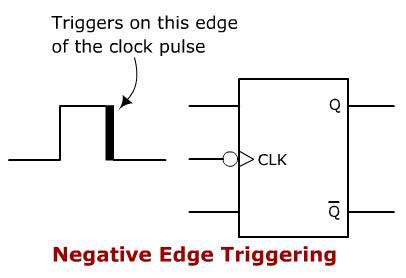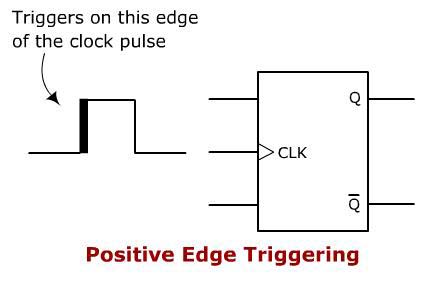Published by: Dikshya
Published date: 12 Jul 2023


1. Positive Edge-Triggered Flip-Flop:
- Also known as rising edge-triggered flip-flop.
- The flip-flop changes its state only at the rising edge (transition from low to high) of the clock signal.
- When the clock signal rises, the flip-flop samples the inputs and updates its state accordingly.
- This type of flip-flop is widely used in synchronous digital systems.
2. Negative Edge-Triggered Flip-Flop:
- Also known as falling edge-triggered flip-flop.
- The flip-flop changes its state only at the falling edge (transition from high to low) of the clock signal.
- When the clock signal falls, the flip-flop samples the inputs and updates its state accordingly.
- Negative edge-triggered flip-flops are commonly used in synchronous digital systems, just like positive edge-triggered flip-flops.
3. Level-Triggered Flip-Flop:
- In level-triggered flip-flops, the flip-flop continuously monitors the level of the clock signal.
- When the clock signal is in the specified level (either high or low), the flip-flop samples the inputs and updates its state.
- The flip-flop remains in the new state until the clock signal level changes.
- Level-triggered flip-flops are typically used in asynchronous digital systems.